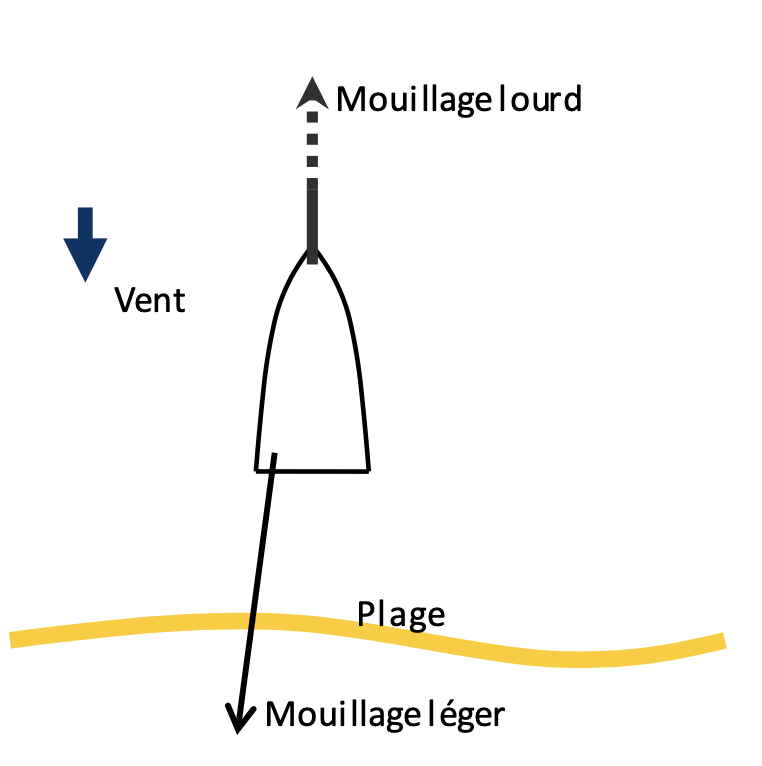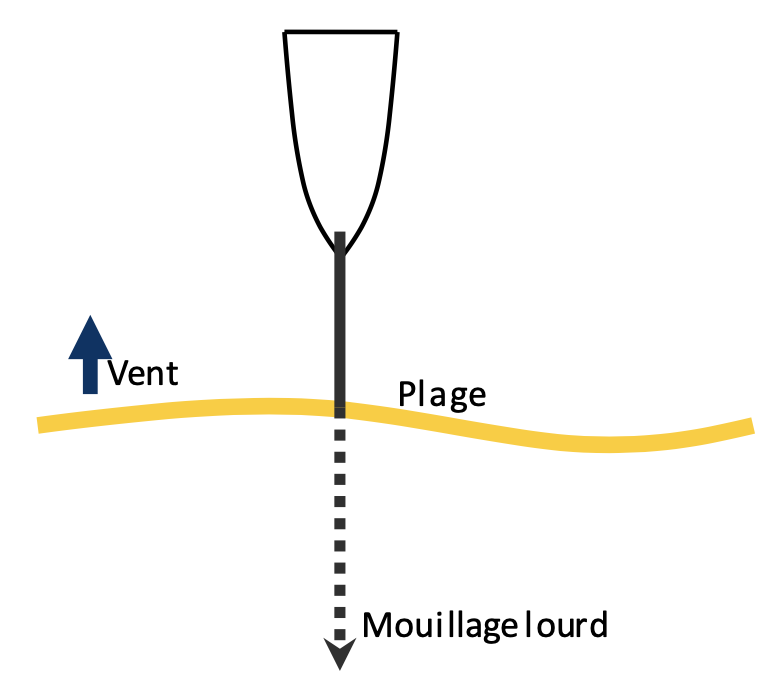To anchor your boat, you generally have two moorings:
- A main anchor, heavy, at the front, consisting of an anchor with its chain and line, a line struck at the front of the boat.
- A secondary, light anchor, at the stern, consisting of a small anchor and a line.
Remember that what ensures that an anchor holds well is not so much the anchor as the length of chain placed on the bottom. Consequently, the anchor responsible for holding your boat in place will be the bow anchor, the stern anchor only allowing the boat to be brought back to shore.
Remember also that the boat will face the wind in relation to the fixed point that is the anchor. Finally, remember that you almost always have cleats that allow you to block the anchor line before it is completely wet, allowing you to adjust the length of your anchor very precisely.
Brief chronology of the safety boat anchorage:
- Choose, according to the wind and the coming tides, the position that the anchored safety boat should occupy.
- Move forward facing the wind in order to anchor the heavy anchor from the front.
- Let the wind take you away from the boat while reeling in the heavy anchor. Lock it when you have reached the desired position. The whole chain is on the bottom.
- Make sure you don’t slip by raising the biting lines.
- Using the back anchor, by successive throws, and possibly the engine, get closer to the beach. Stop and wind up the engine. Disembark.
- Secure the stern anchor on the beach so as to recover it easily (Beware of tides). Leave some slack in the rear anchorage so that the safety boat can face the wind.

Sea wind anchorage
display_reading_time: true display_share_buttons: true navigation:
- “/”

Anchorage by land wind

Anchoring in a parallel wind
